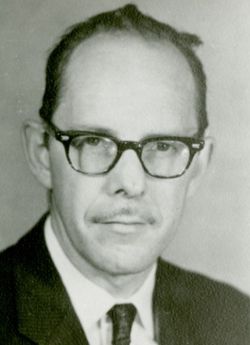Archaeologist. He gained professional recognition as an American archaeologist of the second half of the 20th century as well as an anthropologist. Richard Stockton MacNeish's research focused mostly on the development of agriculture in Canada, the United States, Central and South America, and China. "Scotty," as he was called, became known for his pioneer methods of using a team effort in research, as well as systematic procedures in fieldwork and materials analysis. After showing an early interest as a boy in Chichén Itzá in Mexico, he started studying archaeology in 1936 at Colgate College in New York before transferring to the University of Chicago to study under Professor of Anthropology Dr. Fay-Cooper Cole. He financed his education by boxing, winning the Golden Gloves championship. He earned his B.A. in 1940, his M.A. in 1944, and his Ph.D. in 1949. In 1949, MacNeish accepted a position at the National Museum of Canada, where he started excavating western Canada in the summer and traveling to Central America in the winter. In 1958, he was the first to investigate the high terrace of the Firth River in the northern Yukon and find artifacts. In 1962, in a cave in the Tehuacán Valley in Mexico, he was the first to excavate some of the earliest examples of domesticated corn, which dated back at least 7,000 years. During his career, his research went into Texas as well as other parts of the United States, such as central New York, Monument Valley in Arizona, Illinois, Pennsylvania, and Kentucky. From 1969 to 1980, he was the director of the Robert S. Peabody Museum of Archaeology at Phillips Academy in Andover, Maine. After retiring from the Robert S. Peabody Museum in 1982, he taught briefly at Boston University and then continued his research through the Andover Foundation for Archaeological Research. With his flared straw hat and nonpareil zest, he traveled to Peru and Bolivia for research. In the 1990s, after three years of research, he was credited with discovering the remains of cultivated rice, perhaps 9,000 years old, along the Yangtze River in China. His numerous publications include The Origins of Agriculture and Settled Life. He is considered by many to be a giant in the discipline of archaeology. According to his obituary in the "New York Times," he died at age 82 of injuries received in a one-car traffic accident while traveling between two Mayan mountainous sites, Lamanai and Caracol, in Belize. MacNeish was elected to the British Academy in 1973 and the National Academy of Sciences in 1974. Shortly before his death, he received the prestigious Fryxell Award from the Society for American Archaeology in acknowledgment of his pioneering work in interdisciplinary research.
Archaeologist. He gained professional recognition as an American archaeologist of the second half of the 20th century as well as an anthropologist. Richard Stockton MacNeish's research focused mostly on the development of agriculture in Canada, the United States, Central and South America, and China. "Scotty," as he was called, became known for his pioneer methods of using a team effort in research, as well as systematic procedures in fieldwork and materials analysis. After showing an early interest as a boy in Chichén Itzá in Mexico, he started studying archaeology in 1936 at Colgate College in New York before transferring to the University of Chicago to study under Professor of Anthropology Dr. Fay-Cooper Cole. He financed his education by boxing, winning the Golden Gloves championship. He earned his B.A. in 1940, his M.A. in 1944, and his Ph.D. in 1949. In 1949, MacNeish accepted a position at the National Museum of Canada, where he started excavating western Canada in the summer and traveling to Central America in the winter. In 1958, he was the first to investigate the high terrace of the Firth River in the northern Yukon and find artifacts. In 1962, in a cave in the Tehuacán Valley in Mexico, he was the first to excavate some of the earliest examples of domesticated corn, which dated back at least 7,000 years. During his career, his research went into Texas as well as other parts of the United States, such as central New York, Monument Valley in Arizona, Illinois, Pennsylvania, and Kentucky. From 1969 to 1980, he was the director of the Robert S. Peabody Museum of Archaeology at Phillips Academy in Andover, Maine. After retiring from the Robert S. Peabody Museum in 1982, he taught briefly at Boston University and then continued his research through the Andover Foundation for Archaeological Research. With his flared straw hat and nonpareil zest, he traveled to Peru and Bolivia for research. In the 1990s, after three years of research, he was credited with discovering the remains of cultivated rice, perhaps 9,000 years old, along the Yangtze River in China. His numerous publications include The Origins of Agriculture and Settled Life. He is considered by many to be a giant in the discipline of archaeology. According to his obituary in the "New York Times," he died at age 82 of injuries received in a one-car traffic accident while traveling between two Mayan mountainous sites, Lamanai and Caracol, in Belize. MacNeish was elected to the British Academy in 1973 and the National Academy of Sciences in 1974. Shortly before his death, he received the prestigious Fryxell Award from the Society for American Archaeology in acknowledgment of his pioneering work in interdisciplinary research.
Family Members
Advertisement
See more MacNeish memorials in:
Advertisement




